 Search by Keyword
|
“THIS BOY”
(John Lennon – Paul McCartney)
 The Beatles' versatility is something that may not have been noticed by the screaming teenage girls of the early days of Beatlemania, but it was a key ingredient to their enduring career. While most of their British contemporaries, such as The Rolling Stones, The Kinks, and The Dave Clark Five, could thrash out their own brand of rock and roll very convincingly, these groups came across somewhat awkwardly when trying to reveal a softer side. Their attempts at this were most likely in imitation of what The Beatles were doing anyway. Would “As Tears Go By” by The Rolling Stones, “Tired Of Waiting For You” by The Kinks or “Because” by The Dave Clark Five ever have existed if it wasn't for The Beatles setting the blueprint ahead of time? The Rolling Stones emphatically answer this question with their Beatles-copy-cat career throughout most of the '60s. And who could blame them? The Beatles' versatility is something that may not have been noticed by the screaming teenage girls of the early days of Beatlemania, but it was a key ingredient to their enduring career. While most of their British contemporaries, such as The Rolling Stones, The Kinks, and The Dave Clark Five, could thrash out their own brand of rock and roll very convincingly, these groups came across somewhat awkwardly when trying to reveal a softer side. Their attempts at this were most likely in imitation of what The Beatles were doing anyway. Would “As Tears Go By” by The Rolling Stones, “Tired Of Waiting For You” by The Kinks or “Because” by The Dave Clark Five ever have existed if it wasn't for The Beatles setting the blueprint ahead of time? The Rolling Stones emphatically answer this question with their Beatles-copy-cat career throughout most of the '60s. And who could blame them?
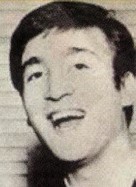 Truth be told, The Beatles were setting the benchmark for other acts to follow, even though it may have been unbeknownst to them. The Beatles were simply versatile. They could rock and roll themselves right off the stage, but that was only a portion of their intention. The band naturally had a love for many different styles of music, including the softer side. Lennon himself stated that The Beatles “never stuck to one style; They never just did blues, or just rock. We loved all music,” including the “sentimental things” as John called them. Truth be told, The Beatles were setting the benchmark for other acts to follow, even though it may have been unbeknownst to them. The Beatles were simply versatile. They could rock and roll themselves right off the stage, but that was only a portion of their intention. The band naturally had a love for many different styles of music, including the softer side. Lennon himself stated that The Beatles “never stuck to one style; They never just did blues, or just rock. We loved all music,” including the “sentimental things” as John called them.
 Their early Cavern years reflected this, showing them crooning adult-sounding classics like “Till There Was You” and “Falling In Love Again” right in between “Twist And Shout” and “Sweet Little Sixteen.” What was so incredible was how convincingly they delivered such a vast array of musical styles on stage. Their early Cavern years reflected this, showing them crooning adult-sounding classics like “Till There Was You” and “Falling In Love Again” right in between “Twist And Shout” and “Sweet Little Sixteen.” What was so incredible was how convincingly they delivered such a vast array of musical styles on stage.
 "We were trying to make money...none of us was rich," stated Paul in his 2021 Hulu documentary series "McCartney 3,2,1." "When we got Brian Epstein as our manager, Brian said, 'You could play cabaret clubs, but you'll have to smarten up,' 'cause we were a bit rock 'n' roll. He says, 'You'll have to sort of smarten up and you'll have to do your more, sort of, ballady songs. You can't just be a straight rock 'n' roll session.' But you can see ('This Boy') at a cabaret club, y'know. 'Ladies and gentlemen, presenting, The Beatles!' The lights go down, little spots go up." "We were trying to make money...none of us was rich," stated Paul in his 2021 Hulu documentary series "McCartney 3,2,1." "When we got Brian Epstein as our manager, Brian said, 'You could play cabaret clubs, but you'll have to smarten up,' 'cause we were a bit rock 'n' roll. He says, 'You'll have to sort of smarten up and you'll have to do your more, sort of, ballady songs. You can't just be a straight rock 'n' roll session.' But you can see ('This Boy') at a cabaret club, y'know. 'Ladies and gentlemen, presenting, The Beatles!' The lights go down, little spots go up."
 The softer side of their musical tastes came from their love of many different genres, such as in the case of “This Boy,” which combines their love of the doo-wop sound of the '50s with the incredible influence that Smokey Robinson and The Miracles had on John Lennon. Once again, as fame brought them to America, we see how natural and convincing The Beatles were at developing their softer side. They weren’t simply throwing in a mellow song just to relieve the rocking tension of the album, or in order to appease their manager or record label, but because it was another ingredient of the whole. It was part of them, and that continued to be heard throughout their career. The softer side of their musical tastes came from their love of many different genres, such as in the case of “This Boy,” which combines their love of the doo-wop sound of the '50s with the incredible influence that Smokey Robinson and The Miracles had on John Lennon. Once again, as fame brought them to America, we see how natural and convincing The Beatles were at developing their softer side. They weren’t simply throwing in a mellow song just to relieve the rocking tension of the album, or in order to appease their manager or record label, but because it was another ingredient of the whole. It was part of them, and that continued to be heard throughout their career.
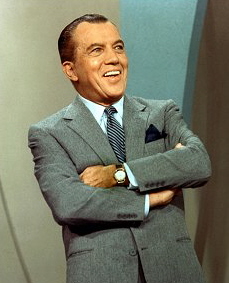 The songwriting maturity displayed on “This Boy” could hardly have gone unnoticed by the curious adult onlookers to the group's second appearance on the Ed Sullivan Show on February 16th, 1964. While their first appearance on the show (February 9th) brought forward the excellent “Till There Was You,” the evidence was clear by the second week that The Beatles were much more than head-swinging long-haired noise makers. While detractors abounded, honest minded parents had to admit there was unmistakable talent behind the gimmicks. And when their daughters came home with the “Meet The Beatles!” album in early 1964, the third track on side one reinforced that fact. The songwriting maturity displayed on “This Boy” could hardly have gone unnoticed by the curious adult onlookers to the group's second appearance on the Ed Sullivan Show on February 16th, 1964. While their first appearance on the show (February 9th) brought forward the excellent “Till There Was You,” the evidence was clear by the second week that The Beatles were much more than head-swinging long-haired noise makers. While detractors abounded, honest minded parents had to admit there was unmistakable talent behind the gimmicks. And when their daughters came home with the “Meet The Beatles!” album in early 1964, the third track on side one reinforced that fact.
 Evidence of the sophistication of this song's melody was demonstrated by Beatles’ producer George Martin, who chose to record and release an instrumental version of the song under the title “Ringo’s Theme (This Boy).” Because of its use as a backdrop to the scene of a sullen Ringo Starr wandering around the waterfront in the movie “A Hard Day’s Night,” George Martin's instrumental version of the song was issued as a single in the US and even made the Billboard Hot 100, peaking at #53 (#1 in Canada). This placement on the charts "pleased me somewhat," George Martin expressed in the Beatles book "Anthology." This only added to the credibility of the Lennon / McCartney songwriting team, proving that an enduring melodic chord structure and melody line could stand alone and win the hearts of adult audiences as well as teenagers. Evidence of the sophistication of this song's melody was demonstrated by Beatles’ producer George Martin, who chose to record and release an instrumental version of the song under the title “Ringo’s Theme (This Boy).” Because of its use as a backdrop to the scene of a sullen Ringo Starr wandering around the waterfront in the movie “A Hard Day’s Night,” George Martin's instrumental version of the song was issued as a single in the US and even made the Billboard Hot 100, peaking at #53 (#1 in Canada). This placement on the charts "pleased me somewhat," George Martin expressed in the Beatles book "Anthology." This only added to the credibility of the Lennon / McCartney songwriting team, proving that an enduring melodic chord structure and melody line could stand alone and win the hearts of adult audiences as well as teenagers.
Songwriting History
 "Just my attempt at writing one of those three-part harmony Smokey Robinson songs," John Lennon explained about "This Boy" in 1980, adding: "There was a period when I thought I didn't write melodies, that Paul wrote those and I just wrote straight, shouting rock 'n' roll. But of course, when I think of some of my own songs, 'In My Life' and some of the early stuff, 'This Boy,' I was writing melody with the best of them." With this quote one can assume that "This Boy" was written entirely by John. He also states as such in a 1972 Hit Parader magazine interview. "Just my attempt at writing one of those three-part harmony Smokey Robinson songs," John Lennon explained about "This Boy" in 1980, adding: "There was a period when I thought I didn't write melodies, that Paul wrote those and I just wrote straight, shouting rock 'n' roll. But of course, when I think of some of my own songs, 'In My Life' and some of the early stuff, 'This Boy,' I was writing melody with the best of them." With this quote one can assume that "This Boy" was written entirely by John. He also states as such in a 1972 Hit Parader magazine interview.
 However, Paul gives a vivid and convincing recollection otherwise in his book "Many Years From Now." He describes the song as another “hotel-bedroom” song written when they “had a couple of hours to kill” before getting ready for another performance sometime in September 1963. Although we don’t know the exact day, in this case we know the exact time the song was written, as McCartney recalls arriving “around one o’clock” in the afternoon, "so we thought, 'Well, let's write one.' Rather like the hotel where we wrote 'She Loves You.'" This would take them to around three o’clock, from 1 to 3 pm, when the song was considered complete. However, Paul gives a vivid and convincing recollection otherwise in his book "Many Years From Now." He describes the song as another “hotel-bedroom” song written when they “had a couple of hours to kill” before getting ready for another performance sometime in September 1963. Although we don’t know the exact day, in this case we know the exact time the song was written, as McCartney recalls arriving “around one o’clock” in the afternoon, "so we thought, 'Well, let's write one.' Rather like the hotel where we wrote 'She Loves You.'" This would take them to around three o’clock, from 1 to 3 pm, when the song was considered complete.
 As a footnote concerning whether the song was completely written in the above mentioned two-hour writing session in September of 1963, we need to consider the actual recording session takes of the song at EMI Studios the following month. At some point during these sessions, a guitar solo was featured instead of the vocals in the bridge, which could suggest that the lyrics in the bridge were written there that day in the studio. Although this is possible, it seems unlikely because of the intricacies of the melody line and lyrics as we’ve come to know. It is also unlikely that they were written during the recording sessions because of the approximate hour’s time that was used to completely record the song on that day. This being the case, it can be accurately assumed that “This Boy” was indeed written completely in the “hotel-bedroom” in two hours. As a footnote concerning whether the song was completely written in the above mentioned two-hour writing session in September of 1963, we need to consider the actual recording session takes of the song at EMI Studios the following month. At some point during these sessions, a guitar solo was featured instead of the vocals in the bridge, which could suggest that the lyrics in the bridge were written there that day in the studio. Although this is possible, it seems unlikely because of the intricacies of the melody line and lyrics as we’ve come to know. It is also unlikely that they were written during the recording sessions because of the approximate hour’s time that was used to completely record the song on that day. This being the case, it can be accurately assumed that “This Boy” was indeed written completely in the “hotel-bedroom” in two hours.
 Paul's account of this September writing session in his 1997 book "Many Years From Now" is uncharacteristically vivid, McCartney detailing the “position of the beds, John and I sitting on twin beds, the G-Plan furniture, the British hotel with olive green and orange everywhere, that marvelous combination, the colors of vomit.” In that setting they fulfilled their desire to write a close-harmony song patterned after the three-part harmony they used in the Cavern Club days when performing the Phil Spector written “To Know Her Is To Love Her.” Paul's account of this September writing session in his 1997 book "Many Years From Now" is uncharacteristically vivid, McCartney detailing the “position of the beds, John and I sitting on twin beds, the G-Plan furniture, the British hotel with olive green and orange everywhere, that marvelous combination, the colors of vomit.” In that setting they fulfilled their desire to write a close-harmony song patterned after the three-part harmony they used in the Cavern Club days when performing the Phil Spector written “To Know Her Is To Love Her.”
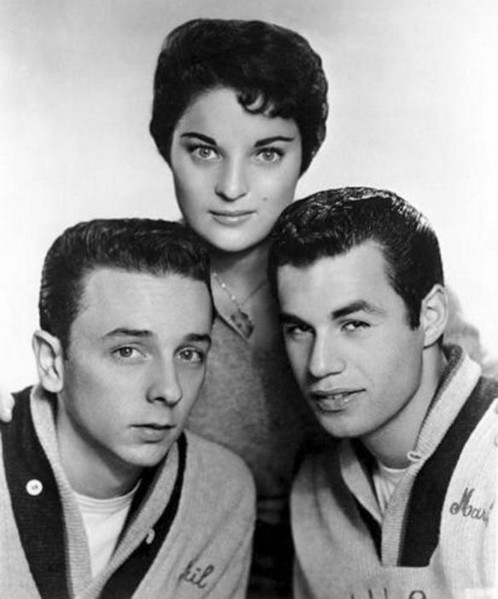 "It was very co-written," Paul continues in "Many Years From Now." "We wanted to do a close harmony thing, like the harmonies we were quite good at then. We used to do a close harmony version of The Teddy Bears' "To Know Her Is To Love Her,' which was good for the versitility in the band. We weren't all rock 'n' roll, we could change the pace, which was always nice after you'd played for three hours. We wrote it in two-part harmony and then put the third part in for George to sing; we'd never actually tried to write something like that. Nice middle, John sang that great, then we'd go back into the close-harmony thing." "It was very co-written," Paul continues in "Many Years From Now." "We wanted to do a close harmony thing, like the harmonies we were quite good at then. We used to do a close harmony version of The Teddy Bears' "To Know Her Is To Love Her,' which was good for the versitility in the band. We weren't all rock 'n' roll, we could change the pace, which was always nice after you'd played for three hours. We wrote it in two-part harmony and then put the third part in for George to sing; we'd never actually tried to write something like that. Nice middle, John sang that great, then we'd go back into the close-harmony thing."
 According to George Harrison, Lennon patterned the song after the Smokey Robinson and The Miracles song “I’ve Been Good To You,” which has a similar circular "doo-wop" chord pattern, melody and arrangement. Another obvious influence used in the writing and performance of "This Boy" was the Bobby Freeman b-side "You Don't Understand Me," which The Beatles included in their "stage act" in 1960 with John singing lead. According to George Harrison, Lennon patterned the song after the Smokey Robinson and The Miracles song “I’ve Been Good To You,” which has a similar circular "doo-wop" chord pattern, melody and arrangement. Another obvious influence used in the writing and performance of "This Boy" was the Bobby Freeman b-side "You Don't Understand Me," which The Beatles included in their "stage act" in 1960 with John singing lead.
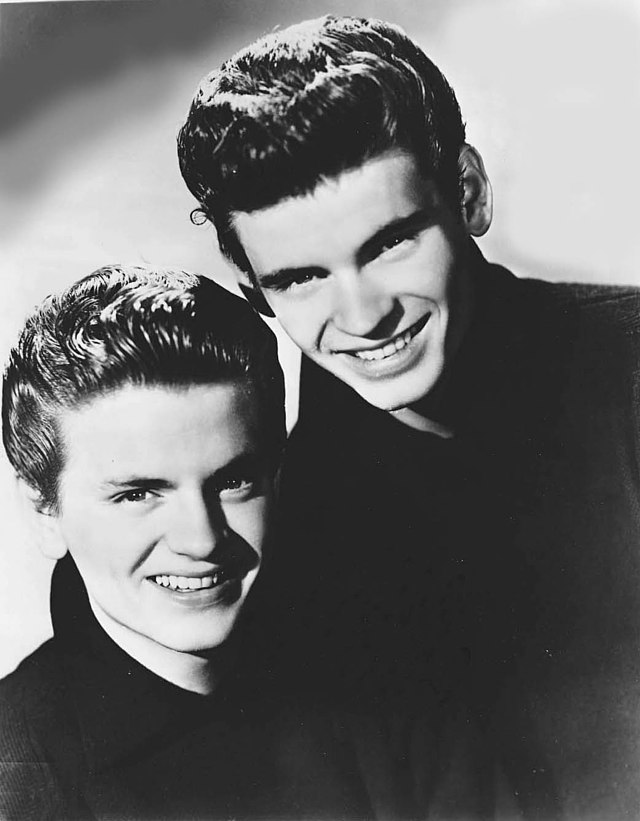 McCartney at one point had claimed that his father had taught The Beatles how to do three-part harmony, but George Harrison protested this claim. After describing “This Boy” as one of their many “three-part harmony numbers,” Harrison explained, “when you think back to early rock and roll there was always stuff like Frankie Lymon and The Teenagers, The Everly Brothers, The Platters. Everybody had harmonies; it was natural to sing a harmony sometimes.” McCartney at one point had claimed that his father had taught The Beatles how to do three-part harmony, but George Harrison protested this claim. After describing “This Boy” as one of their many “three-part harmony numbers,” Harrison explained, “when you think back to early rock and roll there was always stuff like Frankie Lymon and The Teenagers, The Everly Brothers, The Platters. Everybody had harmonies; it was natural to sing a harmony sometimes.”
 That natural ability was, of course, refined by producer George Martin in the studio. “They always experimented with close harmony singing,” George Martin recalled, “all I did was change the odd note.” This was done in the studio with all three vocalists sitting with him at the piano while he made small but necessary adjustments in the notes they sang. Meanwhile, Ringo reportedly sat at the back of the studio smoking a cigarette and reading a comic book. That natural ability was, of course, refined by producer George Martin in the studio. “They always experimented with close harmony singing,” George Martin recalled, “all I did was change the odd note.” This was done in the studio with all three vocalists sitting with him at the piano while he made small but necessary adjustments in the notes they sang. Meanwhile, Ringo reportedly sat at the back of the studio smoking a cigarette and reading a comic book.
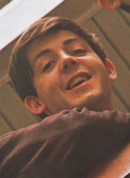 "We wanted to show different sides of ourselves," Paul stated in his "McCartney 3,2,1" documentary. "We could've just been one guy sings the vocal and we'll back him up. But we kept wanting to stretch it a little bit. So this whole song is just the three-part-harmony thing. Those were exciting things to do, y'know, to branch out like that." "We wanted to show different sides of ourselves," Paul stated in his "McCartney 3,2,1" documentary. "We could've just been one guy sings the vocal and we'll back him up. But we kept wanting to stretch it a little bit. So this whole song is just the three-part-harmony thing. Those were exciting things to do, y'know, to branch out like that."
 William Mann, the music critic for The London Times, mentioned “This Boy” in a flattering but ostentatious review of the Beatles music in the issue of the magazine published on December 27th, 1963. McCartney, referring to his article, mentioned William Mann’s reference to “the ‘pandiatonic clusters’ that came flying out of us at the end of ‘This Boy.’ We hadn’t been conscious of any of that." Lennon and McCartney may have lacked proper musical training, but they must have paid more than the usual attention when listening to and studying the music they were exposed to. William Mann, the music critic for The London Times, mentioned “This Boy” in a flattering but ostentatious review of the Beatles music in the issue of the magazine published on December 27th, 1963. McCartney, referring to his article, mentioned William Mann’s reference to “the ‘pandiatonic clusters’ that came flying out of us at the end of ‘This Boy.’ We hadn’t been conscious of any of that." Lennon and McCartney may have lacked proper musical training, but they must have paid more than the usual attention when listening to and studying the music they were exposed to.
Recording History
 Both sides of their fifth British single were recorded during the same three hour recording session on October 17th, 1963 at EMI Studio Two in London. This was the same historic recording session that introduced the techniques of four-track recording to the Beatles, recording “I Want To Hold Your Hand” in the same manner on that day, as well as the first Beatles Christmas Record of speech and an aborted attempt at a remake of “You Really Got A Hold On Me.” Having done these other three items first, “This Boy” was last on the agenda for the day, which approximately comprised the final hour of the session (9 to 10 pm). Both sides of their fifth British single were recorded during the same three hour recording session on October 17th, 1963 at EMI Studio Two in London. This was the same historic recording session that introduced the techniques of four-track recording to the Beatles, recording “I Want To Hold Your Hand” in the same manner on that day, as well as the first Beatles Christmas Record of speech and an aborted attempt at a remake of “You Really Got A Hold On Me.” Having done these other three items first, “This Boy” was last on the agenda for the day, which approximately comprised the final hour of the session (9 to 10 pm).
 After George Martin "changed the odd note" of their harmonies (as mentioned above) it took 15 takes of the song to perfect, most of these takes being complete performances of the song. As mentioned above, "the middle eight originally featured a guitar solo," Mark Lewisohn states in his book "The Beatles Recording Sessions," this apparently being included in earlier takes of "This Boy," being replaced at some point by John's lead vocal spotlight, which begins with the lyrics "Oh, and this boy..." After George Martin "changed the odd note" of their harmonies (as mentioned above) it took 15 takes of the song to perfect, most of these takes being complete performances of the song. As mentioned above, "the middle eight originally featured a guitar solo," Mark Lewisohn states in his book "The Beatles Recording Sessions," this apparently being included in earlier takes of "This Boy," being replaced at some point by John's lead vocal spotlight, which begins with the lyrics "Oh, and this boy..."
 The vocals were recorded, by the group's request, with all three singers huddled around one microphone. "Take 12" and "take 13," where the vocalists were humorously mixing up the song's "this boy" and "that boy" vocals, were included as bonus tracks on the "Free As A Bird" single released in 1995, as detailed below. Their final attempt, "take 15," was deemed the best and ready for an additional overdub from George Harrison. The vocals were recorded, by the group's request, with all three singers huddled around one microphone. "Take 12" and "take 13," where the vocalists were humorously mixing up the song's "this boy" and "that boy" vocals, were included as bonus tracks on the "Free As A Bird" single released in 1995, as detailed below. Their final attempt, "take 15," was deemed the best and ready for an additional overdub from George Harrison.
Two attempts at this overdub, documented as "take 16" and "take 17," were then recorded onto an open track of the four-track tape, these comprising George performing octave guitar fills at the end of the song. These overdubs were added to the end of "take 15."
 One more session was needed to get the song into a releasable condition. A mixing session, attended by George Martin and engineer Norman Smith only, was held four days later on October 21st, 1963. This day was arranged to create the mono mixes necessary for releasing their fifth British single. They created two mono mixes from "take 15" and then performed an edit of both of those mixes to get the final mono version. One more session was needed to get the song into a releasable condition. A mixing session, attended by George Martin and engineer Norman Smith only, was held four days later on October 21st, 1963. This day was arranged to create the mono mixes necessary for releasing their fifth British single. They created two mono mixes from "take 15" and then performed an edit of both of those mixes to get the final mono version.
 This obvious abrupt edit, which is spliced together just before the final verse (after the lyric "seen you cry-y-y-y"), is very noticeable on the released recording but was performed live by The Beatles with flowing precision when done on stage, as can be witnessed, for instance, on their Ed Sullivan Show appearance on February 16th, 1964. It was also decided at this mixing session on this day, for an unknown reason, to fade the end of the song instead of the full harmonized ending The Beatles recorded in the studio. Needless to say, The Beatles continued to perform the full ending on stage throughout the song's performance life. This obvious abrupt edit, which is spliced together just before the final verse (after the lyric "seen you cry-y-y-y"), is very noticeable on the released recording but was performed live by The Beatles with flowing precision when done on stage, as can be witnessed, for instance, on their Ed Sullivan Show appearance on February 16th, 1964. It was also decided at this mixing session on this day, for an unknown reason, to fade the end of the song instead of the full harmonized ending The Beatles recorded in the studio. Needless to say, The Beatles continued to perform the full ending on stage throughout the song's performance life.
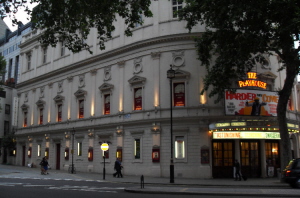 The Beatles later recorded "This Boy" twice for BBC radio, the first one being on December 17th, 1963 at The Playhouse Theatre in London between 3 and 6:30 pm for the show “Saturday Club,” which was produced by Bernie Andrews and broadcast on December 21st between 10 am and noon. The second recording of the song took place on February 28th, 1964 in Studio One of BBC Piccadilly Studions in London between 6:30 and 9 pm for the second edition of the radio show “From Us To You,” which was produced by Bryant Marriott and broadcast on March 30th of that year between 10 am and noon. The Beatles later recorded "This Boy" twice for BBC radio, the first one being on December 17th, 1963 at The Playhouse Theatre in London between 3 and 6:30 pm for the show “Saturday Club,” which was produced by Bernie Andrews and broadcast on December 21st between 10 am and noon. The second recording of the song took place on February 28th, 1964 in Studio One of BBC Piccadilly Studions in London between 6:30 and 9 pm for the second edition of the radio show “From Us To You,” which was produced by Bryant Marriott and broadcast on March 30th of that year between 10 am and noon.
 No stereo mix of the official EMI recording of "This Boy" was initially made before its release in 1963, since the song was only slated to be the b-side of their upcoming single. However, entirely by accident, the song was given its first stereo mix on November 10th, 1966 in Room 65 at EMI Studios by engineers Peter Brown and Graham Kirby. A telephone call was made to EMI to inform them of the line-up for the first “Greatest Hits” package, this being was scheduled to be released in December of that year. By mistake, the phone message related that “This Boy” would be on the album so it would need to have a stereo mix made for album release. The message should have indicated the song “Bad Boy,” which was not released in Britain at that time and would be included on the album, which was titled “A Collection Of Beatles Oldies,” as an enticement for fans to buy an album of songs they probably already owned. Before the mistake was corrected, the four-track tape of “This Boy” was dug out and treated to its first and only stereo mix. Two stereo mixes were made from the edited "take 15" of the song, and then both of those mixes were edited together to create the full stereo mix. No stereo mix of the official EMI recording of "This Boy" was initially made before its release in 1963, since the song was only slated to be the b-side of their upcoming single. However, entirely by accident, the song was given its first stereo mix on November 10th, 1966 in Room 65 at EMI Studios by engineers Peter Brown and Graham Kirby. A telephone call was made to EMI to inform them of the line-up for the first “Greatest Hits” package, this being was scheduled to be released in December of that year. By mistake, the phone message related that “This Boy” would be on the album so it would need to have a stereo mix made for album release. The message should have indicated the song “Bad Boy,” which was not released in Britain at that time and would be included on the album, which was titled “A Collection Of Beatles Oldies,” as an enticement for fans to buy an album of songs they probably already owned. Before the mistake was corrected, the four-track tape of “This Boy” was dug out and treated to its first and only stereo mix. Two stereo mixes were made from the edited "take 15" of the song, and then both of those mixes were edited together to create the full stereo mix.
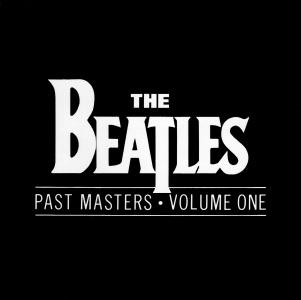 Subsequently, the mix used for the stereo version of “Meet The Beatles!” in the US was actually a duophonic (or fake) stereo mix created by Capitol records. This fake stereo mix continued to be used in America well after 1966 because the true stereo mix that was made then didn’t surface until October of 1988, with the release of “Past Masters, Volume One.” Subsequently, the mix used for the stereo version of “Meet The Beatles!” in the US was actually a duophonic (or fake) stereo mix created by Capitol records. This fake stereo mix continued to be used in America well after 1966 because the true stereo mix that was made then didn’t surface until October of 1988, with the release of “Past Masters, Volume One.”
 “This Boy” did revisit EMI Studios on one other occasion. That occasion was on June 3rd, 1964, when the group was forced to audition Jimmy Nicol to replace an ailing Ringo Starr for the beginning of their first world tour. It would be necessary to see if Jimmy could handle the subdued drum arrangement Ringo played on this song as well as ‘rock-out’ on “I Saw Her Standing There” and “Long Tall Sally.” Apparently he could, because 27 hours later they were in Copenhagen on the first date of their tour. “This Boy” did revisit EMI Studios on one other occasion. That occasion was on June 3rd, 1964, when the group was forced to audition Jimmy Nicol to replace an ailing Ringo Starr for the beginning of their first world tour. It would be necessary to see if Jimmy could handle the subdued drum arrangement Ringo played on this song as well as ‘rock-out’ on “I Saw Her Standing There” and “Long Tall Sally.” Apparently he could, because 27 hours later they were in Copenhagen on the first date of their tour.
 Sometime in 2023, Giles Martin was given the task of creating a "demix remix" of "This Boy" for inclusion as a new track on the 50th Anniversary edition of the compilation album "The Beatles / 1962 - 1966" (aka "The Red Album"). With Peter Jackson's AI technology at his disposal, Giles Martin was able to utilize this "new machine-learning techology" so that "individual elements that were put to tape...and were therefore impossible to separate" could be "untangled, allowing Giles (Martin) to put the original recordings back together with even greater clarity and impact," as stated by John Harris in the liner notes of the above mentioned album. The results were excellent, Ringo's hi-hat playing popping out in the mix as never before. Sometime in 2023, Giles Martin was given the task of creating a "demix remix" of "This Boy" for inclusion as a new track on the 50th Anniversary edition of the compilation album "The Beatles / 1962 - 1966" (aka "The Red Album"). With Peter Jackson's AI technology at his disposal, Giles Martin was able to utilize this "new machine-learning techology" so that "individual elements that were put to tape...and were therefore impossible to separate" could be "untangled, allowing Giles (Martin) to put the original recordings back together with even greater clarity and impact," as stated by John Harris in the liner notes of the above mentioned album. The results were excellent, Ringo's hi-hat playing popping out in the mix as never before.
Song Structure and Style
 Like the vast majority of the early Beatles catalog, “This Boy” was written in the 'verse/ verse/ bridge/ verse' configuration (or aaba). The group showed themselves somewhat adventurous by delving into a full-on 12/8 waltz-like time signature for the first time in their career, which wasn't too unlike the 3/4 time signature used throughout most of “A Taste Of Honey” on the first album. Although a guitar solo from George was attempted at some point in the recording process, it was decided instead not to feature a solo at all. Because of the elongated 16 measure verses and bridge, a repeat of the bridge and final verse, as usual with many Beatles songs up to this point in their career, was not done. Like the vast majority of the early Beatles catalog, “This Boy” was written in the 'verse/ verse/ bridge/ verse' configuration (or aaba). The group showed themselves somewhat adventurous by delving into a full-on 12/8 waltz-like time signature for the first time in their career, which wasn't too unlike the 3/4 time signature used throughout most of “A Taste Of Honey” on the first album. Although a guitar solo from George was attempted at some point in the recording process, it was decided instead not to feature a solo at all. Because of the elongated 16 measure verses and bridge, a repeat of the bridge and final verse, as usual with many Beatles songs up to this point in their career, was not done.
 The song starts out with a strummed three chord precursor by Lennon to set the melancholy mood for the song. This three chord pattern actually fills what would be the last three quarters of a first measure which, by extension, brings the introduction of the song to five measures instead of the expected four. The following four measures are basically the four chord pattern that we will be hearing throughout all three verses, but they set the mood quite nicely. The song starts out with a strummed three chord precursor by Lennon to set the melancholy mood for the song. This three chord pattern actually fills what would be the last three quarters of a first measure which, by extension, brings the introduction of the song to five measures instead of the expected four. The following four measures are basically the four chord pattern that we will be hearing throughout all three verses, but they set the mood quite nicely.
 Right on the one beat of the first verse, we dive headlong into the impressive three-part harmony which will eventually permeate all three verses. Interestingly, English music critic William Mann, as mentioned above, described these harmonies in his November 27th, 1963 article in The London Times as "one of their most intriguing, with its chains of pandiatonic clusters, and the sentiment is acceptable because voiced cleanly and crisply." The eleventh measure of the verse consists of a dramatic break which became a feature of many of the early Beatles songs. This is followed by another break on the twelfth measure, both breaks becoming a highlight for the signature lyric hook-line of the song. Right on the one beat of the first verse, we dive headlong into the impressive three-part harmony which will eventually permeate all three verses. Interestingly, English music critic William Mann, as mentioned above, described these harmonies in his November 27th, 1963 article in The London Times as "one of their most intriguing, with its chains of pandiatonic clusters, and the sentiment is acceptable because voiced cleanly and crisply." The eleventh measure of the verse consists of a dramatic break which became a feature of many of the early Beatles songs. This is followed by another break on the twelfth measure, both breaks becoming a highlight for the signature lyric hook-line of the song.
 A second verse is then performed which is structurally identical to the first, with the exception of the chords played on the last two measures. This change in the chord pattern facilitates a transition into the climactic bridge, which creates the necessary anticipation and suits that transition perfectly. A second verse is then performed which is structurally identical to the first, with the exception of the chords played on the last two measures. This change in the chord pattern facilitates a transition into the climactic bridge, which creates the necessary anticipation and suits that transition perfectly.
The 16 measure bridge actually becomes the highlight of the song, with an uplifting yet pleading melody line rising higher than anything heard in the verses. The chord pattern, as well as the actual chords played, is strikingly dissimilar to the verses yet is an alluring counterpart creating an exciting tension to the song. Each chord in the progression changes every two measures instead of one per measure as the verses do. All the while, harmony background vocals create an atmospheric backdrop to Lennon’s gut-wrenching solo vocal, which climaxes into another break for the 15th and 16th measure while Lennon holds out the word “cry” for a full two measures.
 (As a footnote, the word “cry” has been a constant feature of the lyrics of John Lennon throughout his Beatles career, spanning from “Ask Me Why” through “I’ll Cry Instead,” “Cry Baby Cry” and even “I Am The Walrus.” Some may claim that this may be an indication of his emotional state throughout the '60s and of the loss of his mother early in his life. But we’ll leave that for another book and author.) (As a footnote, the word “cry” has been a constant feature of the lyrics of John Lennon throughout his Beatles career, spanning from “Ask Me Why” through “I’ll Cry Instead,” “Cry Baby Cry” and even “I Am The Walrus.” Some may claim that this may be an indication of his emotional state throughout the '60s and of the loss of his mother early in his life. But we’ll leave that for another book and author.)
 The identically structured third verse with different lyrics is then played, leaving us with the final satisfying lyrical intent of the saga: “…if this boy gets you back again.” The conclusion of the song, or "outro," consists of the title of the song sung in three part harmony repeatedly with the same chord pattern of the verses while an octave guitar passage is repeated in between the gaps while the song fades into the distance. The identically structured third verse with different lyrics is then played, leaving us with the final satisfying lyrical intent of the saga: “…if this boy gets you back again.” The conclusion of the song, or "outro," consists of the title of the song sung in three part harmony repeatedly with the same chord pattern of the verses while an octave guitar passage is repeated in between the gaps while the song fades into the distance.
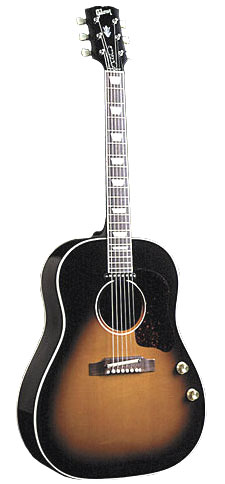 An instrumental analysis shows Lennon primarily strumming his acoustic guitar on the first and fourth beats of each measure, but with feeling, which provides a suitable backdrop to the song. He sings the lowest of the three-part harmonies in the verses, which make this the lead vocal line, being that he’s revealed to be the lead singer during the bridge. During this bridge, John sings a melody line that is begins a full octave higher than he sings in the verses, which adds dynamic force and excitement. The lead vocals of this impressive climatic bridge even impressed McCartney, who many years later stated about the song “nice middle, John sang that great.” An instrumental analysis shows Lennon primarily strumming his acoustic guitar on the first and fourth beats of each measure, but with feeling, which provides a suitable backdrop to the song. He sings the lowest of the three-part harmonies in the verses, which make this the lead vocal line, being that he’s revealed to be the lead singer during the bridge. During this bridge, John sings a melody line that is begins a full octave higher than he sings in the verses, which adds dynamic force and excitement. The lead vocals of this impressive climatic bridge even impressed McCartney, who many years later stated about the song “nice middle, John sang that great.”
 Paul’s bass work, although low in the mix like a lot of the early Beatles songs, is impressive through his use of small three note runs and octave jumps throughout the verses whenever he isn't singing. He seems to know when not to do bass runs, as he plays very rudimentary bass notes during the bridge, which shifts all focus onto the lead vocal line and backing harmonies. Ever the perfectionist, Paul sings his usual higher harmony throughout the song, and always in good pitch. Paul’s bass work, although low in the mix like a lot of the early Beatles songs, is impressive through his use of small three note runs and octave jumps throughout the verses whenever he isn't singing. He seems to know when not to do bass runs, as he plays very rudimentary bass notes during the bridge, which shifts all focus onto the lead vocal line and backing harmonies. Ever the perfectionist, Paul sings his usual higher harmony throughout the song, and always in good pitch.
 George plays electric rhythm guitar using a more prominent swing rhythm during the verses utilizing all six beats of each measure, which provides a nice contrast to the simple chord strumming of Lennon. Harrison then drops the swing rhythm during the climatic bridge and just plays guitar "chops" on each beat, which also provides a suitable contrast for the song. He then ends the song with his overdubbed octave guitar lines which are heard as the song fades. His middle harmony part is also performed with great precision, which shows how rehearsed and refined the vocals were at the time of recording. George plays electric rhythm guitar using a more prominent swing rhythm during the verses utilizing all six beats of each measure, which provides a nice contrast to the simple chord strumming of Lennon. Harrison then drops the swing rhythm during the climatic bridge and just plays guitar "chops" on each beat, which also provides a suitable contrast for the song. He then ends the song with his overdubbed octave guitar lines which are heard as the song fades. His middle harmony part is also performed with great precision, which shows how rehearsed and refined the vocals were at the time of recording.
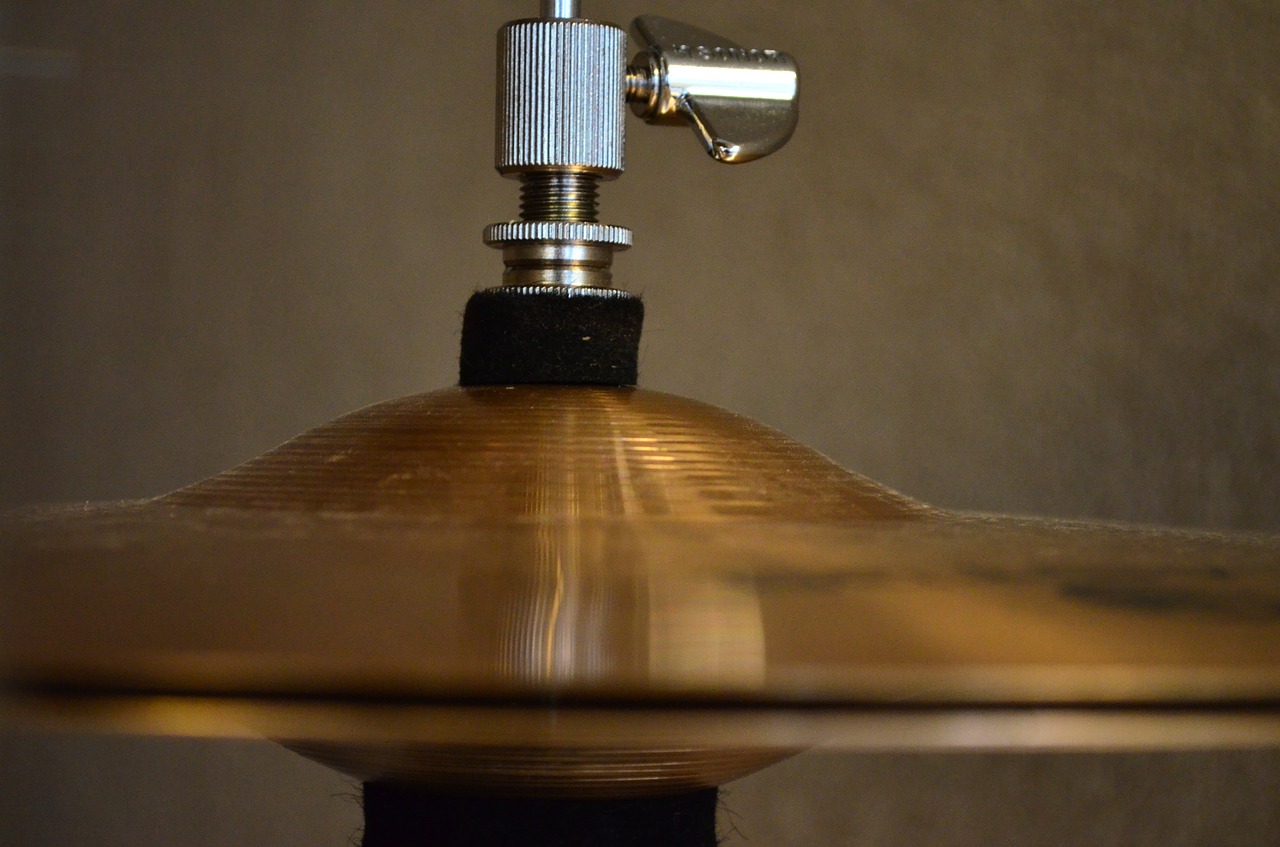 Ringo’s drum work for the song consists primarily of riding his partially closed hi-hat during the verses using the same swing rhythm played by Harrison. The contrast needed for the bridge of the song also involves the drums, as Ringo performs a rudimentary full kit waltz-like pattern until the break, where he returns to his hi-hat beat until the song fades. Ringo’s drum work for the song consists primarily of riding his partially closed hi-hat during the verses using the same swing rhythm played by Harrison. The contrast needed for the bridge of the song also involves the drums, as Ringo performs a rudimentary full kit waltz-like pattern until the break, where he returns to his hi-hat beat until the song fades.
 John Lennon liked to dismiss the lyrics to most of his early Beatles work, stating about this song that there was “nothing in the lyrics, just a sound and a harmony.” But there is more to this formulaic "teen" lyrical content than meets the eye. As was common to his early lyrics, John is portraying himself as a loser. His girl was taken away from him by someone who, the singer claims, “won’t be happy till he’s seen (her) cry.” John Lennon liked to dismiss the lyrics to most of his early Beatles work, stating about this song that there was “nothing in the lyrics, just a sound and a harmony.” But there is more to this formulaic "teen" lyrical content than meets the eye. As was common to his early lyrics, John is portraying himself as a loser. His girl was taken away from him by someone who, the singer claims, “won’t be happy till he’s seen (her) cry.”
 John then says that he would never feel differently about the girl if he could get her “back again.” Lennon’s lyrics depicting wallowing in misery continued to occur occasionally through 1965, this being hinted at even in “Nowhere Man.” John’s inner anguish, as many would call it, seemed to disappear as his lyrics became much more expressive and picturesque from 1966 onward, no doubt influenced by Bob Dylan’s encouragement to expand in his lyric writing, and by drugs (or probably both). John then says that he would never feel differently about the girl if he could get her “back again.” Lennon’s lyrics depicting wallowing in misery continued to occur occasionally through 1965, this being hinted at even in “Nowhere Man.” John’s inner anguish, as many would call it, seemed to disappear as his lyrics became much more expressive and picturesque from 1966 onward, no doubt influenced by Bob Dylan’s encouragement to expand in his lyric writing, and by drugs (or probably both).
 By today’s standards, the use of the simple word "boy" to depict the male suitor sounds extremely dated, but was quite acceptable in 1963/64 terms. As early as the ‘summer of love’ of 1967, that dynamic changed. It would no longer be acceptable to refer to the male partner in any relationship as a "boy" by any stretch of the imagination. As evidence, a little over four years later, Herb Alpert had a #1 hit with the similarly titled “This Guy’s In Love With You.” That "guy" was no longer a "boy." By today’s standards, the use of the simple word "boy" to depict the male suitor sounds extremely dated, but was quite acceptable in 1963/64 terms. As early as the ‘summer of love’ of 1967, that dynamic changed. It would no longer be acceptable to refer to the male partner in any relationship as a "boy" by any stretch of the imagination. As evidence, a little over four years later, Herb Alpert had a #1 hit with the similarly titled “This Guy’s In Love With You.” That "guy" was no longer a "boy."
American Releases
 In November of 1963, it appeared probable that the song “This Boy” would be released as the b-side to their first Capitol records single and, therefore, be catapulted to great exposure on radio and in the homes of millions of teenagers. After all, this was the b-side to their 1.25 million selling British single “I Want To Hold Your Hand,” and the other three American singles released on other labels, such as "She Loves You" on the Philadelphia Swan label, had the same b-sides as their British counterparts thus far. As events transpired, this was not to be. In November of 1963, it appeared probable that the song “This Boy” would be released as the b-side to their first Capitol records single and, therefore, be catapulted to great exposure on radio and in the homes of millions of teenagers. After all, this was the b-side to their 1.25 million selling British single “I Want To Hold Your Hand,” and the other three American singles released on other labels, such as "She Loves You" on the Philadelphia Swan label, had the same b-sides as their British counterparts thus far. As events transpired, this was not to be.
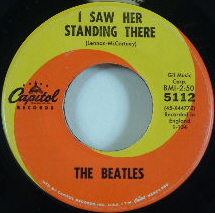 The powers that be at Capitol decided to feature a similarly rocking Beatles song on the b-side of the first single to create what they felt would make a better first impression. They went as far as the first song on their first British album “Please Please Me” to find a suitable replacement, “I Saw Her Standing There.” While history shows that this choice may have been the best, one can only wonder what difference the appearance of “This Boy” as the b-side would have made. (Capitol substituted the b-side of only one other British single, which was later in 1964 with the single “A Hard Day’s Night.” They substituted the mellow “Things We Said Today” with the energetic soundtrack song “I Should Have Known Better.”) The powers that be at Capitol decided to feature a similarly rocking Beatles song on the b-side of the first single to create what they felt would make a better first impression. They went as far as the first song on their first British album “Please Please Me” to find a suitable replacement, “I Saw Her Standing There.” While history shows that this choice may have been the best, one can only wonder what difference the appearance of “This Boy” as the b-side would have made. (Capitol substituted the b-side of only one other British single, which was later in 1964 with the single “A Hard Day’s Night.” They substituted the mellow “Things We Said Today” with the energetic soundtrack song “I Should Have Known Better.”)
 To say that “This Boy” did not make the cut as a b-side on an American single was not to say that US fans could not get the song as a single. Capitol of Canada released a couple of unique singles of their own creation in early 1964 to capitalize on the immense success of Beatlemania in that country. The second of which was “All My Loving” paired with “This Boy” as its b-side. Because of the clamor for "anything Beatles" in the states, America imported copies of this single into the country and thereby created another hit on the Billboard Hot 100. “All My Loving” charted through late March and all of April, peaking at #45. This is a worthy mention, but not an actual American release. To say that “This Boy” did not make the cut as a b-side on an American single was not to say that US fans could not get the song as a single. Capitol of Canada released a couple of unique singles of their own creation in early 1964 to capitalize on the immense success of Beatlemania in that country. The second of which was “All My Loving” paired with “This Boy” as its b-side. Because of the clamor for "anything Beatles" in the states, America imported copies of this single into the country and thereby created another hit on the Billboard Hot 100. “All My Loving” charted through late March and all of April, peaking at #45. This is a worthy mention, but not an actual American release.
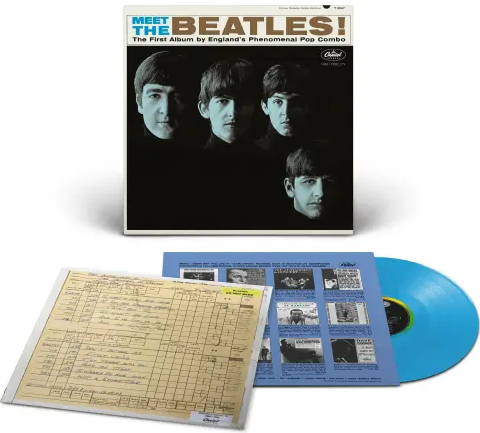 The first release of the song on American shores was the famous “Meet The Beatles!” album released on January 20th, 1964. It appears as the third track of side one after the replacement b-side “I Saw Her Standing There.” The position on the album appears to be Capitol’s recognition of the "star quality" of the song. This album was finally released on an individual compact disc on January 21st, 2014, both the mono and stereo mixes being contained on a single CD. A mono edition of the album on opaque blue vinyl was then released on November 22nd, 2024 for sale exclusively at Target stores. The first release of the song on American shores was the famous “Meet The Beatles!” album released on January 20th, 1964. It appears as the third track of side one after the replacement b-side “I Saw Her Standing There.” The position on the album appears to be Capitol’s recognition of the "star quality" of the song. This album was finally released on an individual compact disc on January 21st, 2014, both the mono and stereo mixes being contained on a single CD. A mono edition of the album on opaque blue vinyl was then released on November 22nd, 2024 for sale exclusively at Target stores.
 Three rare releases of the song also should be documented here. A jukebox version of the “Meet The Beatles!” album (#SXA 2047) was released in January of 1964 to promote non-single tracks from the album in jukeboxes in the US. “This Boy” was featured as the second song on side one. In February of 1964, “The Beatles Open End Interview” (#PRO 2548) was sent to disc jockeys around the country to be played on the air to simulate a personal interview with the group. Side two contained two non-single tracks, the first of which was “This Boy.” Three rare releases of the song also should be documented here. A jukebox version of the “Meet The Beatles!” album (#SXA 2047) was released in January of 1964 to promote non-single tracks from the album in jukeboxes in the US. “This Boy” was featured as the second song on side one. In February of 1964, “The Beatles Open End Interview” (#PRO 2548) was sent to disc jockeys around the country to be played on the air to simulate a personal interview with the group. Side two contained two non-single tracks, the first of which was “This Boy.”
 Also in February of 1964, a promotional disc was prepared by Capitol entitled “Great New Releases From The Sound Capitol Of The World” which featured “This Boy.” This album was issued to radio stations to encourage broadcast of an entire side of the album at a time, since both sides of the album featured a variety of Capitol recording artists. All three of these releases are very hard to find and quite collectible. Also in February of 1964, a promotional disc was prepared by Capitol entitled “Great New Releases From The Sound Capitol Of The World” which featured “This Boy.” This album was issued to radio stations to encourage broadcast of an entire side of the album at a time, since both sides of the album featured a variety of Capitol recording artists. All three of these releases are very hard to find and quite collectible.
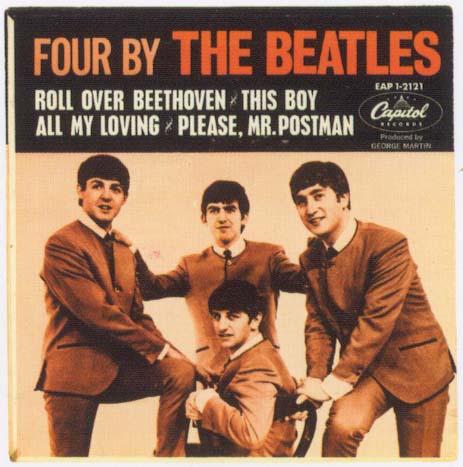 Its next release was on May 11th, 1964, on Capitol’s first attempt at an extended-play single (EP) entitled “Four By The Beatles.” The idea of the EP was to capitalize on the minor success of the songs contained on the two Canadian singles that made the US charts. “This Boy” was featured as the first song of side two. The record sold far less than any of the Capitol singles or albums released thus far, showing that EP potential in the US at this time was not worth pursuing. The EP charted on the Billboard Hot 100 for three weeks in June of 1964, peaking at #92. Another reason for its failure was probably that all four of these songs were released on a Capitol album by this time, and therefore offered nothing new to Beatles fans. Its next release was on May 11th, 1964, on Capitol’s first attempt at an extended-play single (EP) entitled “Four By The Beatles.” The idea of the EP was to capitalize on the minor success of the songs contained on the two Canadian singles that made the US charts. “This Boy” was featured as the first song of side two. The record sold far less than any of the Capitol singles or albums released thus far, showing that EP potential in the US at this time was not worth pursuing. The EP charted on the Billboard Hot 100 for three weeks in June of 1964, peaking at #92. Another reason for its failure was probably that all four of these songs were released on a Capitol album by this time, and therefore offered nothing new to Beatles fans.
 Sometime in 1967, Capitol released Beatles music on a brand new but short-lived format called "Playtapes." These tape cartidges did not have the capability to include entire albums, so two truncated four-song versions of "Meet The Beatles" were released in this portable format, "This Boy" being on one of these releases. These "Playtapes" are hard to find and highly collectable today. Sometime in 1967, Capitol released Beatles music on a brand new but short-lived format called "Playtapes." These tape cartidges did not have the capability to include entire albums, so two truncated four-song versions of "Meet The Beatles" were released in this portable format, "This Boy" being on one of these releases. These "Playtapes" are hard to find and highly collectable today.
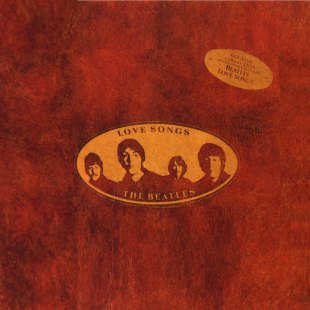 Since the song was not a hit single in the US, it didn’t make the grade to appear on the "greatest hits" package “1962-1966” (the Red Album), nor was it a "rock and roll" song, which was a prerequisite for inclusion on the highly successful double LP “Rock n’ Roll Music.” The song’s next release would therefore have to wait until October 21st, 1977 with the release of the double album “Love Songs,” in which it fit perfectly. This compilation, released during the current wave of post-Beatlemania, only managed to peak at #24 on the Billboard album chart, although it appears to have sold 3 million units before its deletion from Capitol’s roster in the late '80s. Since the song was not a hit single in the US, it didn’t make the grade to appear on the "greatest hits" package “1962-1966” (the Red Album), nor was it a "rock and roll" song, which was a prerequisite for inclusion on the highly successful double LP “Rock n’ Roll Music.” The song’s next release would therefore have to wait until October 21st, 1977 with the release of the double album “Love Songs,” in which it fit perfectly. This compilation, released during the current wave of post-Beatlemania, only managed to peak at #24 on the Billboard album chart, although it appears to have sold 3 million units before its deletion from Capitol’s roster in the late '80s.
 Because of EMI's decision to release a box set that included all of the British Beatles albums as well as an additional album entitled "Rarities" that included songs that did not appear on any British Beatles album, Capitol had initially decided to release this album in America. 2,000 promotional copies of this album were manufactured (#SPRO-8969) and then another unlimited number of advance copies (ESN-SN-12009) were printed in the fall of 1979. "This Boy" was included on this proposed album which was decided to be abondoned due to the fact that this and most of the songs contained therein were available on other Beatles albums in the US at the time. These promotional albums are very collectible today. Because of EMI's decision to release a box set that included all of the British Beatles albums as well as an additional album entitled "Rarities" that included songs that did not appear on any British Beatles album, Capitol had initially decided to release this album in America. 2,000 promotional copies of this album were manufactured (#SPRO-8969) and then another unlimited number of advance copies (ESN-SN-12009) were printed in the fall of 1979. "This Boy" was included on this proposed album which was decided to be abondoned due to the fact that this and most of the songs contained therein were available on other Beatles albums in the US at the time. These promotional albums are very collectible today.
 The first time "I Want To Hold Your Hand" was paired with "This Boy" on a single in the US as it was in Britain was on December 6th, 1982 as featured in the vinyl box set "The Beatles Singles Collection." When this package was released as "The Beatles CD Singles Collection" on November 11th, 1992 and as a reissued vinyl collection titled "The Singles Collection" on November 22nd, 2019, this same single was included. The first time "I Want To Hold Your Hand" was paired with "This Boy" on a single in the US as it was in Britain was on December 6th, 1982 as featured in the vinyl box set "The Beatles Singles Collection." When this package was released as "The Beatles CD Singles Collection" on November 11th, 1992 and as a reissued vinyl collection titled "The Singles Collection" on November 22nd, 2019, this same single was included.
 March 7th, 1988 became the date of the next US release of “This Boy,” which finally premiered the stereo mix of the song that was done nearly 22 years earlier for the British album “A Collection Of Beatles Oldies.” (A 1976 Canadian single was actually the first release of this stereo mix which did not become available in America until twelve years later!) The album “Past Masters, Volume One” was released, along with “Past Masters, Volume Two,” to complete The Beatles discography available on CD for the first time. Both "Past Masters" volumes were combined as a vinyl two-album set simply entitled "Past Masters," this being released in the US on October 24th, 1988. This entire set was then remastered and released on CD on September 9th, 2009 and on vinyl on November 12th, 2012. March 7th, 1988 became the date of the next US release of “This Boy,” which finally premiered the stereo mix of the song that was done nearly 22 years earlier for the British album “A Collection Of Beatles Oldies.” (A 1976 Canadian single was actually the first release of this stereo mix which did not become available in America until twelve years later!) The album “Past Masters, Volume One” was released, along with “Past Masters, Volume Two,” to complete The Beatles discography available on CD for the first time. Both "Past Masters" volumes were combined as a vinyl two-album set simply entitled "Past Masters," this being released in the US on October 24th, 1988. This entire set was then remastered and released on CD on September 9th, 2009 and on vinyl on November 12th, 2012.
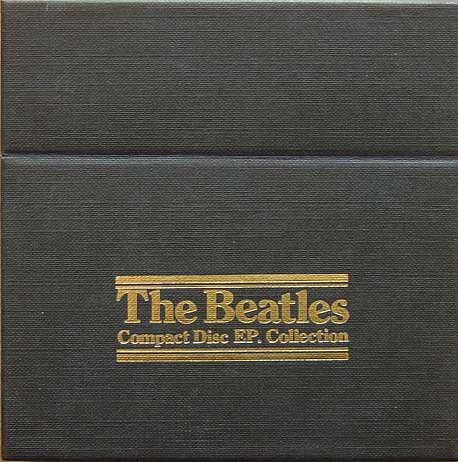 On June 30th, 1992, the stereo mix of “This Boy” also appeared on a bonus disc included in the box set “Compact Disc EP Collection,” which was the CD version of the British released vinyl box set that came out back in 1981. On June 30th, 1992, the stereo mix of “This Boy” also appeared on a bonus disc included in the box set “Compact Disc EP Collection,” which was the CD version of the British released vinyl box set that came out back in 1981.
 The second occasion that "I Want To Hold Your Hand" was paired with "This Boy" on a single was in March of 1994 when Capitol released this single for their Cema "For Jukebox Only" series on clear vinyl. Find this one and you have an interesting collectors' piece. The second occasion that "I Want To Hold Your Hand" was paired with "This Boy" on a single was in March of 1994 when Capitol released this single for their Cema "For Jukebox Only" series on clear vinyl. Find this one and you have an interesting collectors' piece.
 The next release of the song was on November 21st, 1995, on the highly successful “Anthology 1” double disc. Disc two contains the version of “This Boy” that they performed on the British TV program "The Morecambe and Wise Show" on December 2nd, 1963. This compilation was the first official occurrence of an album release debuting in the #1 spot on the Billboard album chart. It spent a total of 29 weeks on the chart and reached a sales figure of over 3 ½ million. The next release of the song was on November 21st, 1995, on the highly successful “Anthology 1” double disc. Disc two contains the version of “This Boy” that they performed on the British TV program "The Morecambe and Wise Show" on December 2nd, 1963. This compilation was the first official occurrence of an album release debuting in the #1 spot on the Billboard album chart. It spent a total of 29 weeks on the chart and reached a sales figure of over 3 ½ million.
 The song was also released on December 12th, 1995 as a bonus track to the newly recorded Beatles song “Free As A Bird.” This version of “This Boy” was actually two original takes of the song made on October 17th, 1963 ("take 12" and "take 13"). These takes are humorous because of the background vocalists getting their “this boys” and “that boys” mixed up, which causes the song to break down with laughter. The single peaked at #6 on the Billboard Hot 100. The song was also released on December 12th, 1995 as a bonus track to the newly recorded Beatles song “Free As A Bird.” This version of “This Boy” was actually two original takes of the song made on October 17th, 1963 ("take 12" and "take 13"). These takes are humorous because of the background vocalists getting their “this boys” and “that boys” mixed up, which causes the song to break down with laughter. The single peaked at #6 on the Billboard Hot 100.
 The re-release of “Meet The Beatles!” then appeared in the four-disc compilation “The Capitol Albums, Vol. 1” on November 15th, 2004. Combined with the albums “The Beatles’ Second Album,” “Something New” and “Beatles ’65,” it comprised both the original stereo and mono mixes of the album. Therefore, the original “fake” duophonic stereo version of “This Boy” is contained on this release. This box set peaked at #35 on the Billboard album chart in its first charted week. The re-release of “Meet The Beatles!” then appeared in the four-disc compilation “The Capitol Albums, Vol. 1” on November 15th, 2004. Combined with the albums “The Beatles’ Second Album,” “Something New” and “Beatles ’65,” it comprised both the original stereo and mono mixes of the album. Therefore, the original “fake” duophonic stereo version of “This Boy” is contained on this release. This box set peaked at #35 on the Billboard album chart in its first charted week.
On September 9th, 2009, the CD box set "The Beatles In Mono" was released, which featured a crystal clear remastered mono version of "This Boy" on its disc "Mono Masters." The vinyl edition of this new box set was first released on September 9th, 2014.
 Also released on September 9th, 2009, in promotion of the remastered Beatles catalog, the "09.09.09 Sampler" was distributed to retailers and radio programmers, "This Boy" being featured therein. This has become quite the find for collectors. Also released on September 9th, 2009, in promotion of the remastered Beatles catalog, the "09.09.09 Sampler" was distributed to retailers and radio programmers, "This Boy" being featured therein. This has become quite the find for collectors.
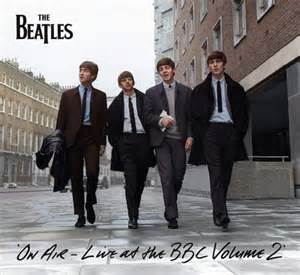 November 11th, 2013 was the release date for the album "On Air - Live At The BBC Volume 2." This included a version of "This Boy" as recorded on December 17th, 1963 for the BBC radio program "Saturday Club." Even though this was intended for radio transmission only, they took pains to double-track John's lead vocals to give it the same depth as heard on the released version. Interestingly, listen for John to accidentally sing "that boy" instead of "this boy" at the beginning of the final verse. Also released around this date was a 14-track sampler of the above album for promotional purposes, "This Boy" being included therein. November 11th, 2013 was the release date for the album "On Air - Live At The BBC Volume 2." This included a version of "This Boy" as recorded on December 17th, 1963 for the BBC radio program "Saturday Club." Even though this was intended for radio transmission only, they took pains to double-track John's lead vocals to give it the same depth as heard on the released version. Interestingly, listen for John to accidentally sing "that boy" instead of "this boy" at the beginning of the final verse. Also released around this date was a 14-track sampler of the above album for promotional purposes, "This Boy" being included therein.
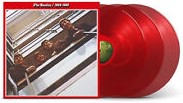 A 50th Anniversay edition of the original 1973 compilation album "The Beatles / 1962 - 1966" (aka the "Red Album") was later released on November 10th, 2023. This newly expanded edition of the album included 12 additional songs for a total of 38 tracks, including the new mix of "This Boy" detailed above, and was made available as a double CD and as a triple vinyl release on both black and red vinyl. A 50th Anniversay edition of the original 1973 compilation album "The Beatles / 1962 - 1966" (aka the "Red Album") was later released on November 10th, 2023. This newly expanded edition of the album included 12 additional songs for a total of 38 tracks, including the new mix of "This Boy" detailed above, and was made available as a double CD and as a triple vinyl release on both black and red vinyl.
 On November 21st, 2025, "Anthology 4" was released on both CD and vinyl, this also being made available within the "Anthology Collection" box set on CD and on vinyl. "Take 12" and "take 13" of "This Boy" as recorded at EMI Studios on October 17th, 1963 were both included here as they were on the "Free As A Bird" single detailed above. On November 21st, 2025, "Anthology 4" was released on both CD and vinyl, this also being made available within the "Anthology Collection" box set on CD and on vinyl. "Take 12" and "take 13" of "This Boy" as recorded at EMI Studios on October 17th, 1963 were both included here as they were on the "Free As A Bird" single detailed above.
Live Performances
“This Boy” became a common fixture in the group's stage act from December 1963 through June 1964, which included their historic premier in the US as well as many other countries.
 The aforementioned “Morecambe and Wise Show” on December 2nd, 1963 appears to be the first performance of "This Boy," which culminated into additional British television appearances in promotion of The Beatles' recently released single. The song became a permanent feature in their British concerts, including their “Sunday Night at the London Palladium” show on January 12th, 1964. It was also in the set list during their stint at the Olympia Theater in Paris, which ran from January 16th through February 4th, 1964. The aforementioned “Morecambe and Wise Show” on December 2nd, 1963 appears to be the first performance of "This Boy," which culminated into additional British television appearances in promotion of The Beatles' recently released single. The song became a permanent feature in their British concerts, including their “Sunday Night at the London Palladium” show on January 12th, 1964. It was also in the set list during their stint at the Olympia Theater in Paris, which ran from January 16th through February 4th, 1964.
 February 1964 brought The Beatles to America, and with them they brought “This Boy” to their Washington Coliseum concert on February 11th, followed by their appearance at Carnegie Hall on February 12th and then their second Ed Sullivan Show appearance on February 16th. February 1964 brought The Beatles to America, and with them they brought “This Boy” to their Washington Coliseum concert on February 11th, followed by their appearance at Carnegie Hall on February 12th and then their second Ed Sullivan Show appearance on February 16th.
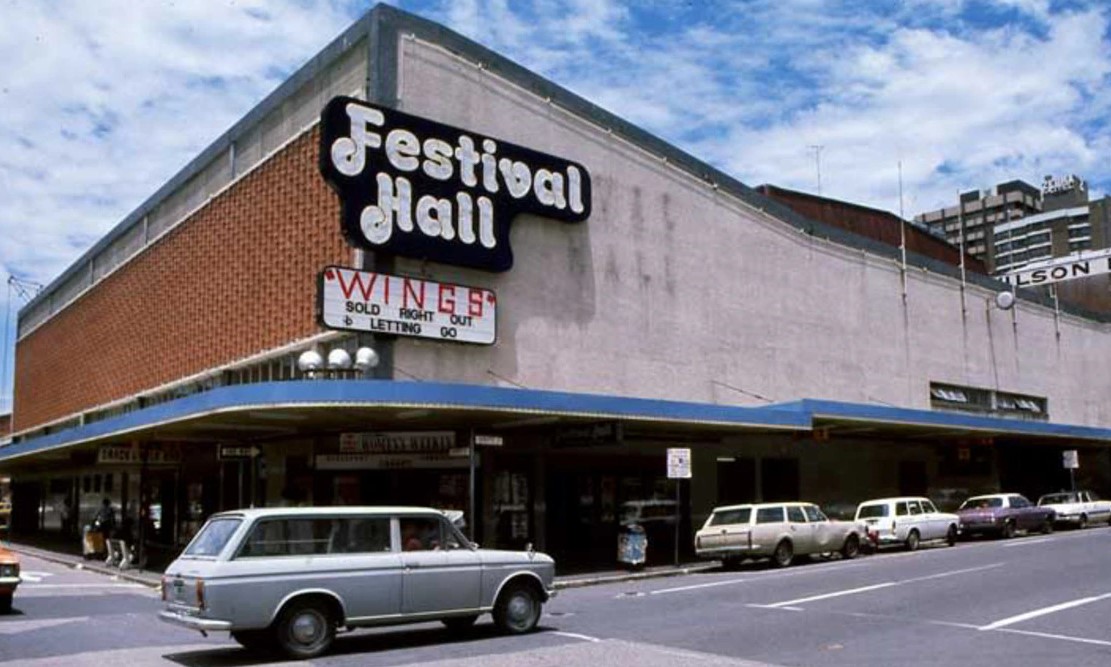 When the first leg of their first world tour began in 1964 (with Jimmy Nicols on drums) on June 4th, the song was still in the set list. They performed it in Copenhagen, Adelaide and at Festival Hall in Melbourne, Australia (with a returned Ringo) before finally retiring the song for good on June 17th, 1964. When the first leg of their first world tour began in 1964 (with Jimmy Nicols on drums) on June 4th, the song was still in the set list. They performed it in Copenhagen, Adelaide and at Festival Hall in Melbourne, Australia (with a returned Ringo) before finally retiring the song for good on June 17th, 1964.
Conclusion
 What truly made “This Boy” a remarkable recording, in addition to the tight harmony interplay between John, Paul and George, was the sheer liberation of the bridge which accentuated the drama of the song. This was highlighted to great effect on stage when, as on their Ed Sullivan Show performance of the song, they all huddled around one microphone to portray their oneness of mind as a band. What truly made “This Boy” a remarkable recording, in addition to the tight harmony interplay between John, Paul and George, was the sheer liberation of the bridge which accentuated the drama of the song. This was highlighted to great effect on stage when, as on their Ed Sullivan Show performance of the song, they all huddled around one microphone to portray their oneness of mind as a band.
 That the group could afford to virtually throw away such a brilliantly constructed song as a b-side says a lot about the quality of the material they were writing at the time. They were truly on a roll, finding national and international fame which was fueling their creative output. Knowing that the song became a certified #1 hit in Canada as the b-side of “All My Loving,” one can only speculate as to how high the song would have charted if it had been released as a single in the US. Nonetheless, the song stands as testimony to the brilliance of the early Lennon / McCartney songwriting team. That the group could afford to virtually throw away such a brilliantly constructed song as a b-side says a lot about the quality of the material they were writing at the time. They were truly on a roll, finding national and international fame which was fueling their creative output. Knowing that the song became a certified #1 hit in Canada as the b-side of “All My Loving,” one can only speculate as to how high the song would have charted if it had been released as a single in the US. Nonetheless, the song stands as testimony to the brilliance of the early Lennon / McCartney songwriting team.
Song Summary
"This Boy”
Written by: John Lennon / Paul McCartney
- Song Written: September 1963
- Song Recorded: October 17th, 1963
- First US Release Date: January 20th, 1964
- First US Album Release: Capitol #ST-2047 “Meet The Beatles!”
- US Single Release: Capitol #SXA 2047 (Meet The Beatles Jukebox EP)
- Highest Chart Position: #92 (Four By The Beatles EP)
- British Album Release: Parlophone #PCSP 721 “Love Songs”
- Length: 2:13
- Key: D major
- Producer: George Martin
- Engineers: Norman Smith, Geoff Emerick
Instrumentation (most likely):
- John Lennon – Lead Vocals, Rhythm Guitar (1962 Gibson J160E)
- Paul McCartney - Bass Guitar (1963 Hofner 500/1), Harmony Vocals
- George Harrison – Lead Guitar (1962 Gretsch 6122 Country Gentleman), Harmony Vocals
- Ringo Starr – Drums (1963 Ludwig Downbeat Black Oyster Pearl)
Written and compiled by Dave Rybaczewski
|
IF YOU WOULD LIKE TO MAKE A DONATION TO KEEP THIS WEBSITE UP AND RUNNING, PLEASE CLICK BELOW!
Sign Up Below for our MONTHLY BEATLES TRIVIA QUIZ!
|